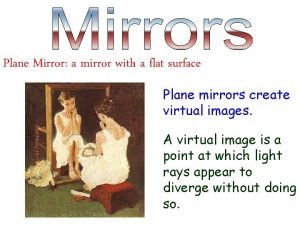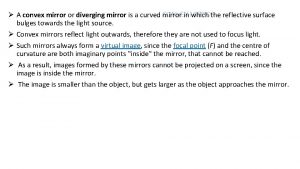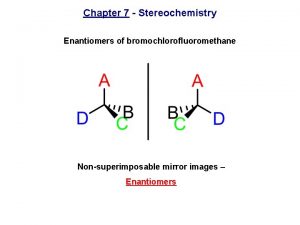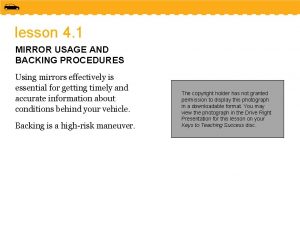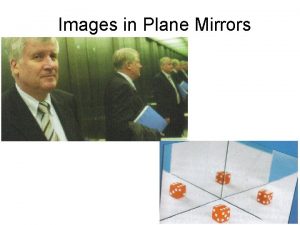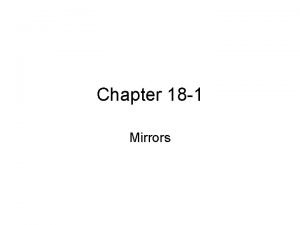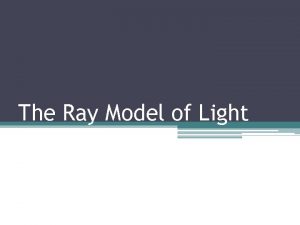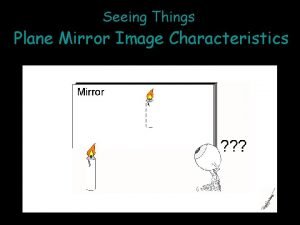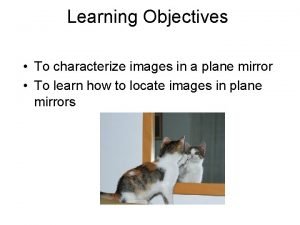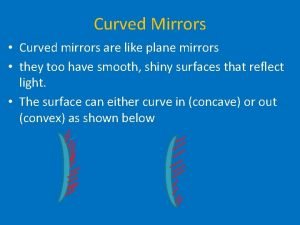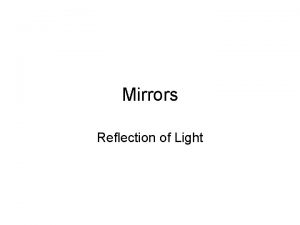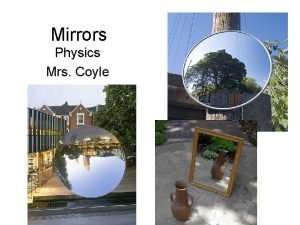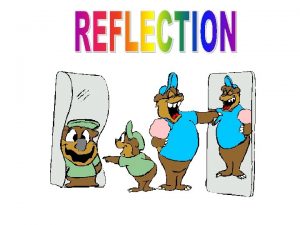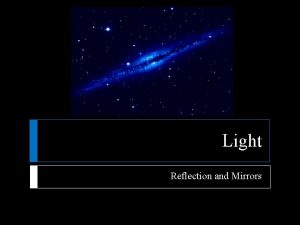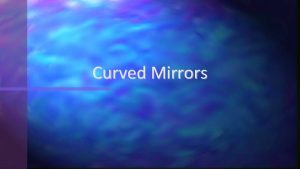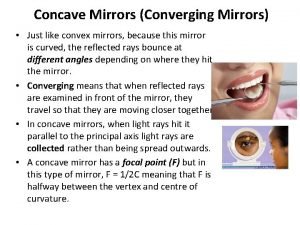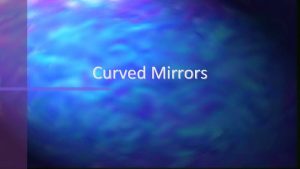Unit 3 Light PLANE MIRRORS TERMS Plane mirror












- Slides: 12

Unit 3: Light PLANE MIRRORS

TERMS: � Plane mirror- a smooth reflecting surface � Virtual image- images formed by a plane mirror. CANNOT be projected onto a screen � Real image- images that can be projected onto a screen (ie. pin hole camera)

CHARACTERISTICS OF PLANE MIRRORS 1. The image is located the same distance behind the mirror (di) as the object is in front of the mirror (do) � 2. di=-do The image (Hi) is the same size as the object (Ho) � Hi=Ho

CHARACTERISTICS CON’T 3. The image is formed upright but laterally inverted (facing the object)

MIRROR EQUATIONS

DRAWING RAY DIAGRAMS � You draw a ray diagram to find where an image is formed in a mirror � Important points: � Diagrams need to be neat, labeled and drawn to scale � Solid lines represent the path of a light ray, arrows show the direction � Dotted lines are used to show where the light ray appears to coming from

DRAWING RAY DIAGRAMS � There are 4 important image characteristics to consider: 1. 2. 3. 4. Magnification Attitude (upright or inverted) Type (real or virtual) Position (di)

SEEING HOW THE EYE SEES POINT OBJECTS 1. 2. 3. 4. 5. 6. 7. Draw a perpendicular line from the object to the mirror Extend the line behind the mirror Find the image using di=do Draw a straight line from the image to the top of the eye (dotted on the image side) Draw another line from the bottom of the eye Where the line strikes the mirror draw a line back to the object Draw arrows to indicate direction

SEE HANDOUT

DRAWING LARGE OBJECTS Rules: 1. Draw perpendicular lines from the top and bottom of the object to the mirror 2. Use do=di to find the image location 3. Extend the perpendicular lines past the mirror to the top or bottom of the image 4. Draw a straight line from the top of the image to the top of the eye (dotted line on image side) 5. Draw another line from the bottom of the eye to the bottom of the image 6. Where the ‘image to eye lines’ strike the mirror, draw lines back to the eye 7. Draw arrows on the lines to the eye to indicate direction �


 It is a mirror with a flat surface.
It is a mirror with a flat surface. Convex mirror is a diverging mirror
Convex mirror is a diverging mirror Mirror, mirror on the wall
Mirror, mirror on the wall Commonwealth fund mirror mirror
Commonwealth fund mirror mirror Lesson 4 mirror mirror
Lesson 4 mirror mirror Light light light chapter 23
Light light light chapter 23 Light light light chapter 22
Light light light chapter 22 Chapter 22
Chapter 22 Properties of images
Properties of images Is a flat smooth mirror
Is a flat smooth mirror Transparent ray model
Transparent ray model Salt characteristics of a plane mirror
Salt characteristics of a plane mirror All images in plane mirrors are apex
All images in plane mirrors are apex
